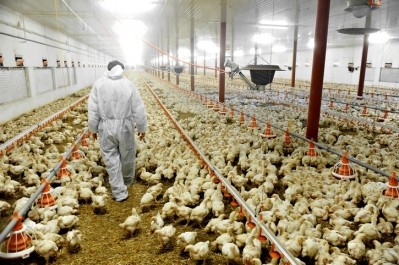IFTC 2022 is calling for abstract submissions

Wageningen University, in partnership with the VICTAM Foundation, will host the second International Feed Technology Congress (IFTC) in Utrecht, The Netherlands, over two days, May 31 and June 1, 2022; it is being run as part of the wider VICTAM trade show.
Students, professors, researchers and industry professions are urged to participate.
The congress will see thematic presentations by international keynote speakers as well as oral and poster presentations, while all the contributions to IFTC 2022 will be published as a special issue of the Animal Feed Science & Technology journal, said Wageningen University’s Thomas van der Poel.
Submissions are sought on a range of novel processing methods, including techniques that are being used in other sectors such as food processing, approaches that might enhance the physical properties of feed, its texture or structure, for example, or new spraying and coating techniques, along with technology focused on optimizing premixtures and feed additives.
“The aim is that the IFTC 2022 will bring together people from research institutions and from industry to exchange knowledge and expertise, to share technical and scientific developments in the fields of animal feed technology, and to discuss the latest results.”
The deadline for submission of abstracts is March 1, 2022.
Valorization of co-products
A multi-authored paper summarized the discussions that took place during the first IFTC conference and concluded that “animal feed has a social responsibility to contribute to more sustainable food systems”.
Dr Wouter Hendriks, chair of Animal Nutrition at the Department of Animal Sciences at Wageningen University, and a contributor to that paper, told us in August, that one of the biggest issues facing the future of the feed industry is a shortage of raw materials.
“Many of the materials that used to go into animal feed are being diverted into biorefinery systems and other outlets. On top of this, the food industry is getting better and better at extracting nutrients from all sorts of raw materials. So, we are seeing huge pressure on existing raw feed materials, plus those materials we have relied upon until now are becoming leaner in nutritional value,” he said.
Dr Hendriks sees the valorization of co-products as a key solution to bridging this gap. However, he said this is not without its challenges.
“Co-products tend to be characterized by more fiber, less starch and variable protein quality, so feed technology needs to work out how to transform all of that into high value feed materials and incorporate it – preferably into a pellet because that is the format that works best for the industry.”
The industry is starting to meet this challenge by fermenting, modifying and enhancing co-products with microbial proteins, he said.
Plugging gaps in pelleting knowledge
Dr Menno Thomas, founder of agribusiness consultancy Zetadec, noted that there is plenty of scope to make existing grinding, mixing, and pelleting processes more efficient.
“There are all these processes going on during pelleting; we’re barely getting to grips with what is happening during conditioning and the actual pelleting step, let alone the subsequent cooling process. Quantifying them and knowing how they change with different process settings and ingredients is an area where knowledge is lacking.”
He suggested that process improvements could be made by transferring knowledge from food technology, giving the example of glass transition.
“Many raw materials exhibit something called glass transition. If you mention it to anyone in the feed industry their eyes glaze over whereas food technologists know exactly what you are talking about. Applying food technology principles to feed technology could, I think, give us new insights.”








